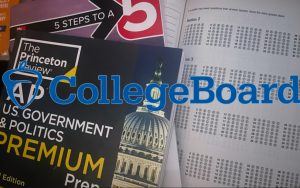Social Media is Lying To You
Social Media Posts Can Be Extremely Misleading
December 13, 2022

Social Media has a huge impact on young minds and the well-being of teens. Studies show social media can be linked to depression, anxiety, loneliness, self-harm, and suicide. The false personas created online can trick young impressionable minds into believing information that isn’t true. What’s posted on social media can be misinterpreted.
People can impersonate others by creating fake accounts under the names of other people. They then try to act like them over social media. These impersonators are referred to as “imposters,” and they make it hard for people to tell the real accounts from the fake ones. News Literacy Project gives ways to verify accounts on social media and find out if they are authentic. The first way is to check the creation date of the account. Authentic accounts will usually have a long history and a large follower count. Another way to verify an account is to double-check the sources. Look up other accounts under the same name or try to find other posts that are about the same topic.
An example of an impersonator account is the account @Teslareal on Twitter. This account was pretending to be the company Tesla by posting things insinuating that they are the real Tesla account. This account was verified and had a few hundred thousand followers. Many people thought that this account was real because they posted pictures of Elon Musk and his wife and referred to them as the owners. The fact that the account was verified was also very misleading and made it seem like the account was real, when it in fact was not.
Social media gives people the freedom to post whatever they want, whenever they want meaning that it is very easy to spread false information. People will post in order to get attention from other people or to gain followers and likes. It is easy to fall into the traps of what people post online because you are not able to tell if it is true or not. Spreading false information can be extremely harmful and can lead to bigger consequences than one may think. It can create drama between people on social media especially if the topic being posted about is controversial. You can differentiate what’s real from what’s fake by checking who is posting it and seeing if there is anyway you can verify the information. If a trusted, verified source is posting the information, it is more than likely that the information being shared is true.
An example of fake news is Anti Vaccination groups claiming that “flu season” is “sugar poisoning season” because it directly follows Halloween. Eating candy can make you feel sick, but it can not give you the flu according to facts. Reducing your sugar intake will not prevent the flu. The anti-vax groups are trying to convince people that they do not need to get the vaccine in order to stay healthy.
Many teens get their information from TikTok, so fake news on TikTok can have a big effect. An example of fake information being spread on TikTok was an edited video of President Joe Biden singing Baby Shark instead of the national anthem. This video was not real. Sophomore Paige Monty said that she would not believe it if she saw it on TikTok because she knows that could not happen. Sophomore Hannah Sharp said that she might believe it when she first sees it, but then after a little while, she could most likely figure out that it is not real. Freshman Izzy West said she did not believe it at all because she knows more people would have been talking about it on social media.
Social Media posts can also be biased or opinion based. This doesn’t mean that they are necessarily false, but the information is not completely factual. Everybody is entitled to their own opinions or biases and social media can sometimes only show one side of the story. It is important to be aware of what you are reposting on social media because there is a very large chance that it could not be true.







